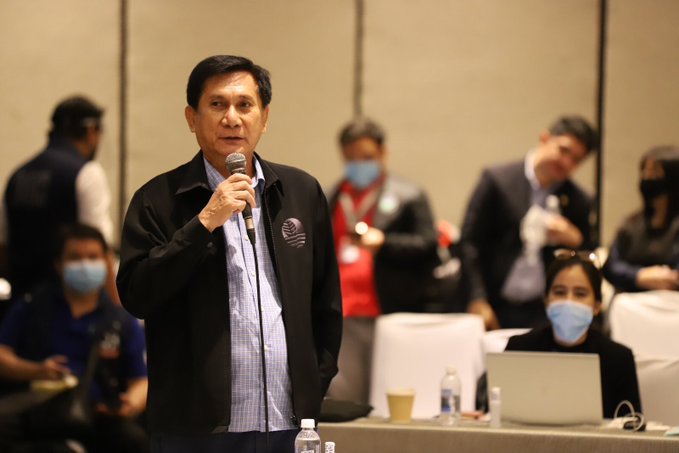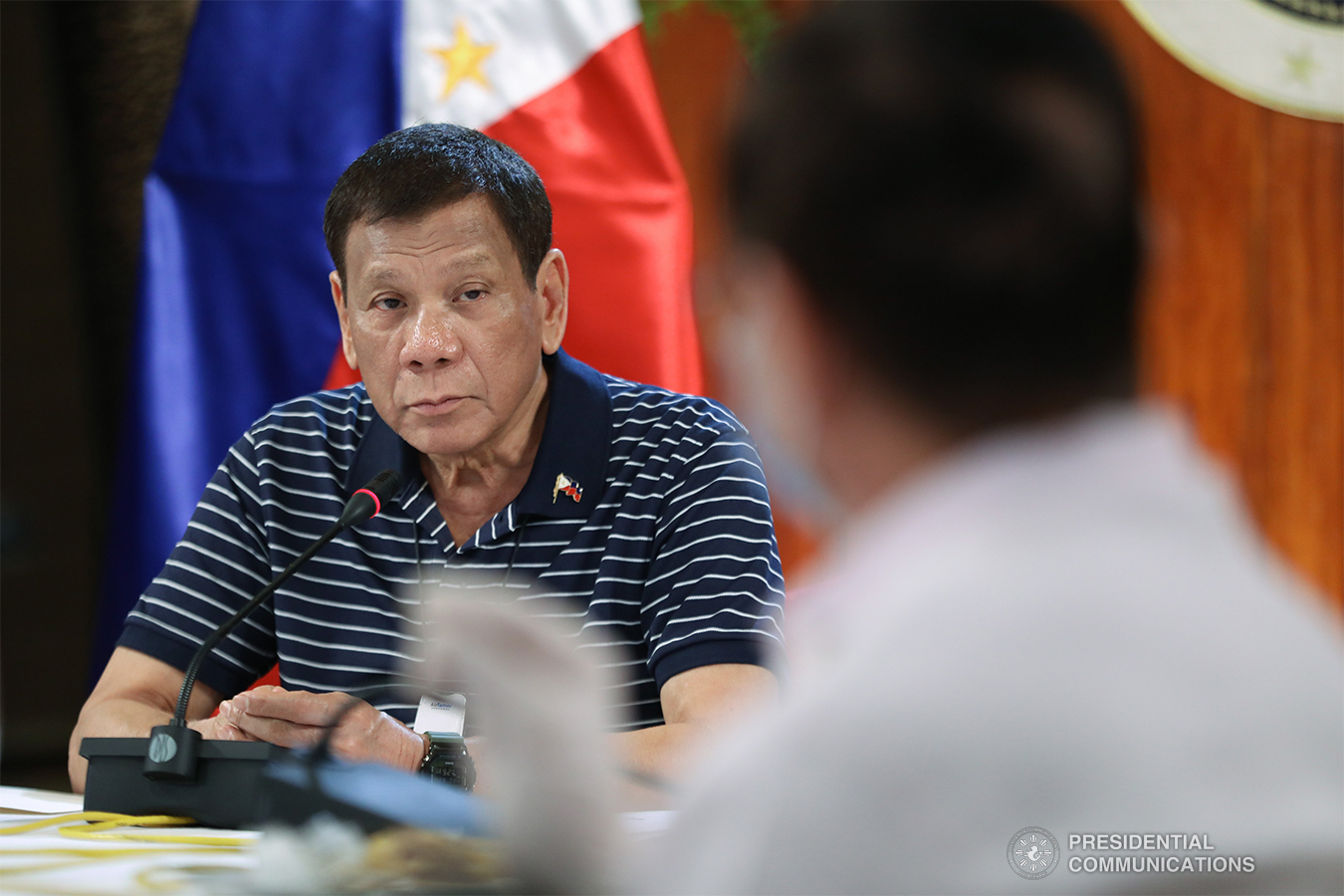Environment Secretary Roy Cimatu inaccurately claimed that the Philippines was a commonwealth of the United States (U.S) when the Spanish flu ravaged the world in 1918.
STATEMENT
During President Rodrigo Duterte’s June 22 televised speech with members of his Cabinet on the coronavirus disease 2019 (COVID-19) pandemic, Cimatu welcomed his new assignment to “oversee” government response efforts in Cebu City as cases of infection in the area rose significantly.
The secretary said:
“This (pandemic) only happened 100 years [ago] and I was looking at the statistics of [the] last pandemic in 1918 wherein it was a worldwide — similar to…what we are experiencing now — and there were about 50 million who died. And I was researching how many Filipinos died in 1918 to 1920 in that pandemic.”
He added:
“At that time, Mr. President, we were under [the] Commonwealth and the Americans were here and we suspect that doon nanggaling iyong (that’s where the) virus (came from) then. So we suffered also casualties in that year. Through the researches coming from some Filipinos, there are (sic) about 50,000 to 75,000 Filipinos [who] died at that time. Of course, they were also implementing some lockdowns.…”
Source: RTVMalacanang, Kumusta Po Mahal Kong Kababayan? | Meeting on COVID-19 Concerns and Talk to the People on COVID-19, June 22, 2020, watch from 56:19 to 57:28
FACT
Contrary to Cimatu’s claim, the Philippines became a commonwealth of the U.S. only on Nov. 15, 1935 — more than a decade after the Spanish flu pandemic — which lasted for 11 years until the American government “recognized” its independence in July 1946.
Prior to the inauguration of the “Commonwealth of the Philippines” in 1935, Filipinos had been resisting the colonial rule of the Americans. Spain, the first colonizer, ruled the Philippines for more than 330 years before ceding it to the U.S. for $20 million under the Treaty of Paris.
The status of being a commonwealth, acting as a “state” of the U.S., was the “penultimate step” toward the independence of the Philippines. Through the legislation and approval of the Philippine Independence Act, also known as Tydings-McDuffie law, in the U.S. in 1934, the country was assured of independence after a “10-year transitional period,” according to historical records published by the Official Gazette.
The Commonwealth of the Philippines officially ended on July 4, 1946, when Manuel Roxas took his oath as the newly elected president of the newly established Third Republic of the Philippines.
1918 Influenza
The Spanish flu pandemic, which later became known as the 1918 influenza, lasted until 1919, infecting at least 500 million people worldwide. Its death toll ranges from 40 million to 50 million, according to the World Health Organization and the U.S. Centers for Disease Control and Prevention, respectively.
In the Philippines, an estimated 85,000 people died due to the pandemic in 1918, according to the annual report of the Philippine Health Service that year and published later in 1919. The Public Health Service under Vicente De Jesus, the first Filipino appointed as acting director of the American-led public office in 1919, noted in the report that “it was impossible to keep tab of the actual number of cases, but it is believed that the general mortality was about 1.8 percent.”
While the 1918 pandemic was named after Spain, there is “no universal consensus” where it originated, based on an explainer by the U.S. CDC. However, several experts have argued that the virus could have come from China, U.S., France, and the United Kingdom.
The virus that caused Spanish flu was the Influenza A (H1N1), the same lineage of contagion that caused the swine flu pandemic in 2009.
Cimatu is not the only official who has recently made inaccurate claims about the Spanish flu pandemic in light of the COVID-19 situation. In a speech in late May, President Duterte wrongly claimed the 1918 outbreak began prior to the First World War. (See VERA FILES FACT CHECK: Duterte is wrong; Spanish flu outbreak did not precede WWI)
Sources
Presidential Communications Operations Office, PRRD assigns Cimatu COVID-19 overseer in Cebu — Palace, June 23, 2020
RTVMalacanang, Kumusta Po Mahal Kong Kababayan? | Meeting on COVID-19 Concerns and Talk to the People on COVID-19, June 22, 2020
Official Gazette, Proclamation 2148 : Establishment of the Commonwealth of the Philippines, November 14, 1935
Official Gazette, Republic Day, Accessed June 29, 2020
Official Gazette, Treaty of Peace between the United States of America and the Kingdom of Spain (Treaty of Paris), signed in Paris, December 10, 1898
Merriam-Webster Dictionary, Commonwealth | Definition of Commonwealth, Accessed June 29, 2020
Official Gazette, The Commonwealth of the Philippines, Accessed June 29, 2020
Official Gazette, Third Republic, Accessed June 29, 2020
World Health Organization, WHO Report on Global Surveillance of Epidemic-prone Infectious Diseases – Influenza, Accessed June 30, 2020
U.S. Centers for Disease Control and Prevention, History of 1918 Flu Pandemic | Pandemic Influenza (Flu),Accessed June 29, 2020
Origin of the Spanish flu
- History, Why Was It Called the ‘Spanish Flu?’, Jan. 12, 2016
- Stat News, Unraveling the Spanish flu’s secret: A cold email leads to century-old clues, Dec. 5, 2018
- USA Today, Fact check: How did the 1918 pandemic get the name ‘Spanish flu’?, March 23, 2020
U.S. Centers for Disease Control and Prevention, Reconstruction of the 1918 Influenza Pandemic Virus
University of Michigan Digital library Collections, Report of the philippine Public Health Service for the fiscal year from January 1 to December 31, 1918.1918 (Digital Archive), Accessed June 30, 2020
Department of Health, A Legacy Public Health, 2014
GEALOGO, F. (2009). The Philippines in the World of the Influenza Pandemic of 1918-1919. Philippine Studies, 57(2), 261-292. Retrieved June 30, 2020, from www.jstor.org/stable/42634010
Department of Health, LOOK: DOH COVID-19 CASE BULLETIN #107, June 29, 2020
University of the Philippines, COVID-19 FORECASTS IN THE PHILIPPINES: NCR, CEBU and COVID-19 HOTSPOTS as of June 25, 2020, June 29, 2020
(Guided by the code of principles of the International Fact-Checking Network at Poynter, VERA Files tracks the false claims, flip-flops, misleading statements of public officials and figures, and debunks them with factual evidence. Find out more about this initiative and our methodology.)


